
The glaciated peaks of the Rocky, Cascade, and Olympic Mountains are the domain of the mountain goat (Oreamnos americanus). Spending most of their time on the steep slopes above treeline, these sure-footed animals have more to worry about snow and rock slides than predators.
They are well adapted for this environment -- from their shaggy coat to the design of their hooves. Here I show examples of habitat, hooves, tracks, feeding behavior, and other sign.
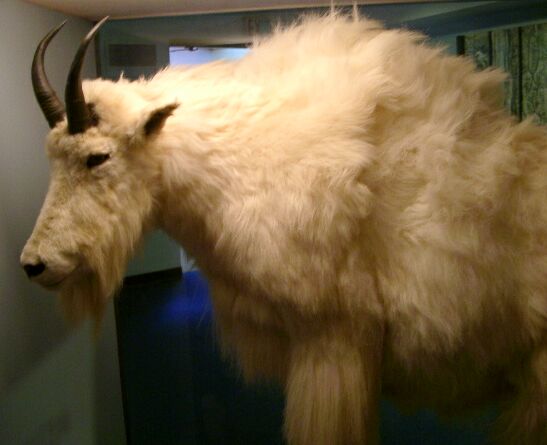
The biologists point out that our mountain goat is actually not a true goat but rather a mountain antelope. Regardless, it is a unique and fascinating animal adapted to a unique environment.
Mountain goats may be found in the Cascades and Olympics of Washington, the Wallowas in Oregon, and the Rockies.
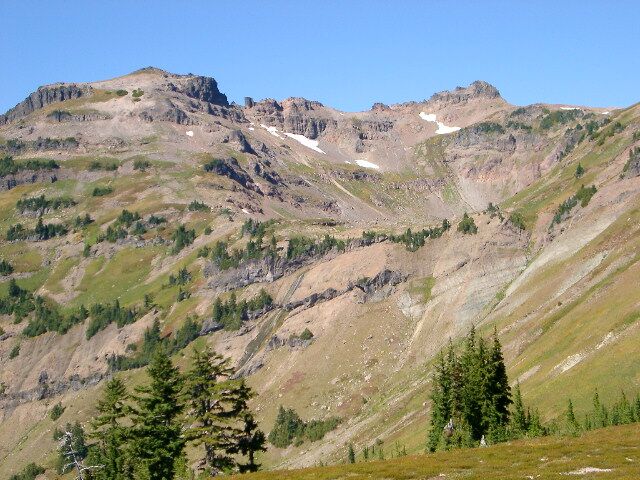
Goat Rocks Wilderness near Mt. Raineer, Washington
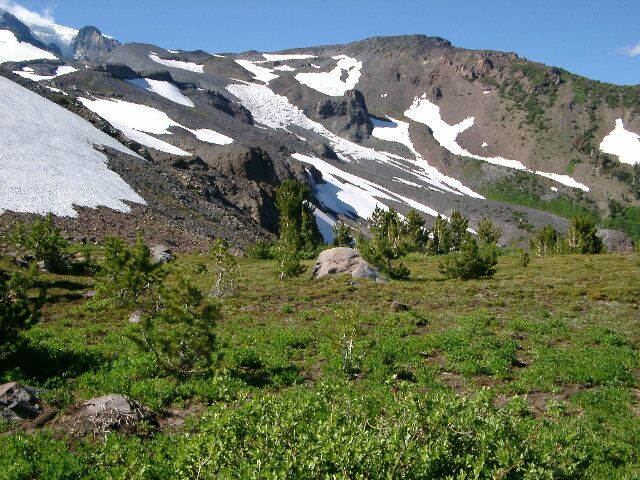
Above Hellroaring Canyon on Mt. Adams, Washington.
Goats tend to spend their winters above tree line where wind blows away the snow. In summer, however, they may drop down to lower elevations for brief periods to feed in alpine meadows and especially to congregate at mineral licks. Near the Stikine River in British Columbia, I observed a heavily trampled mineral lick at the edge of a lake. On the slopes above I counted over 70 goats and was told by a local fishing guide that they could be seen at the lick each morning.
Goat hooves consist of clods with a hard shell around soft, rough pads that have good friction on rock. The clod tips are more rounded and splayed than deer. The dew claws typically do not show.
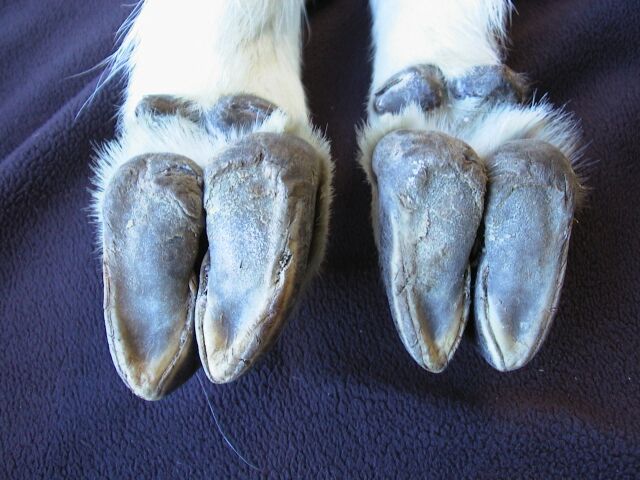
Mountain goat hooves from the collection of James Halfpenny.
Although there is overlap in the elevation range where mule deer and mountain goat tracks might be found, it should be fairly easy to distinguish their tracks based on the shape of the clod. Goats have a relatively blunt tip with a short taper on both sides of the clod that makes the track appear splayed unlike than the heart shape of deer tracks where the taper is on the outside of the clod and usually comes to a sharp point.
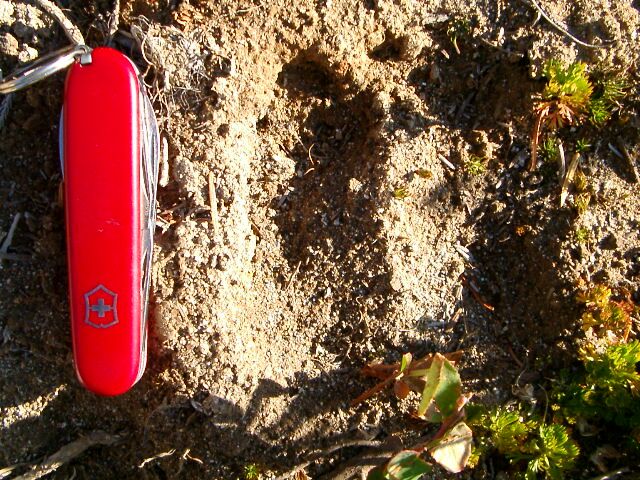
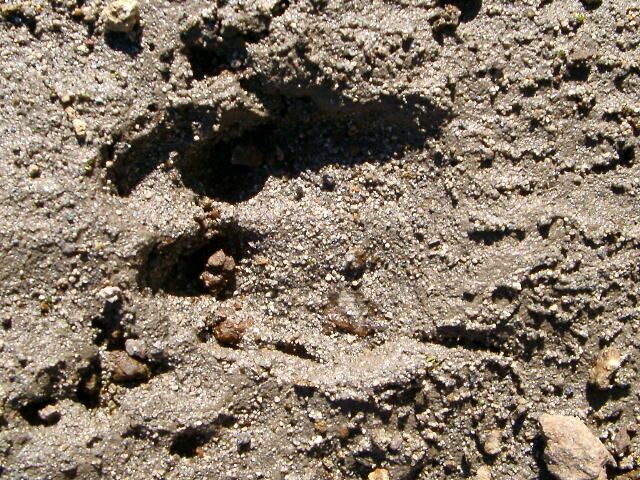
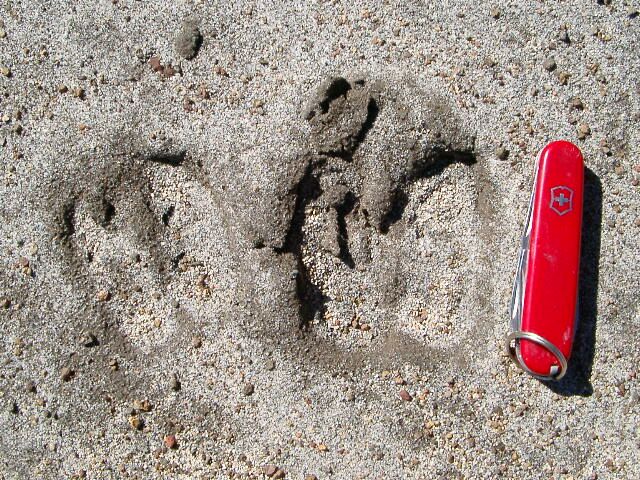
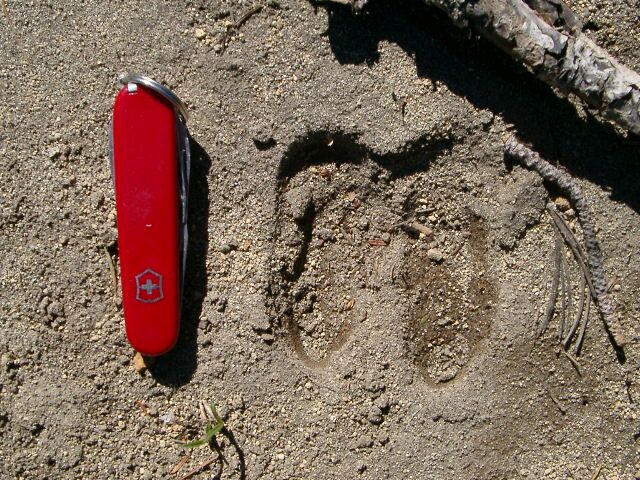
Probable nanny.
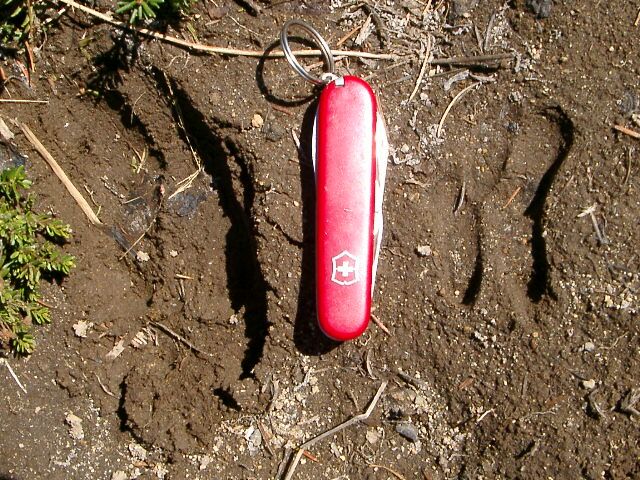
Probable nanny with kid.
Goats appear to eat a variety of lichen, mosses, forbs, grasses, sedges, and shrubs. Signs of their feeding resemble other ungulates.
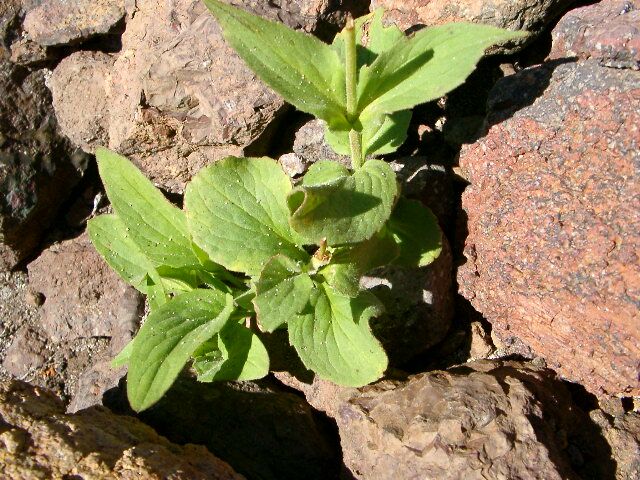
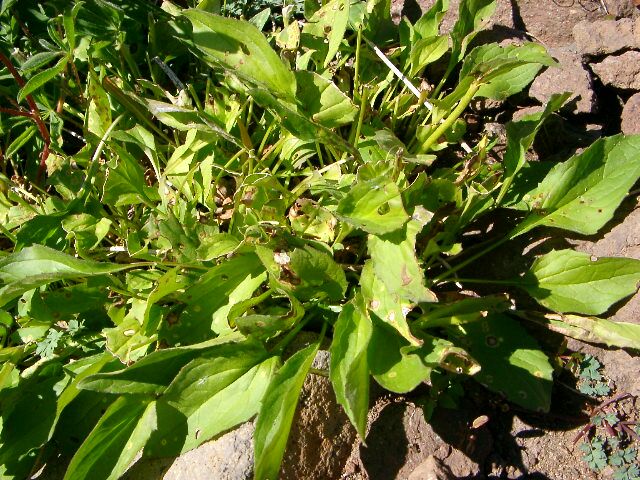
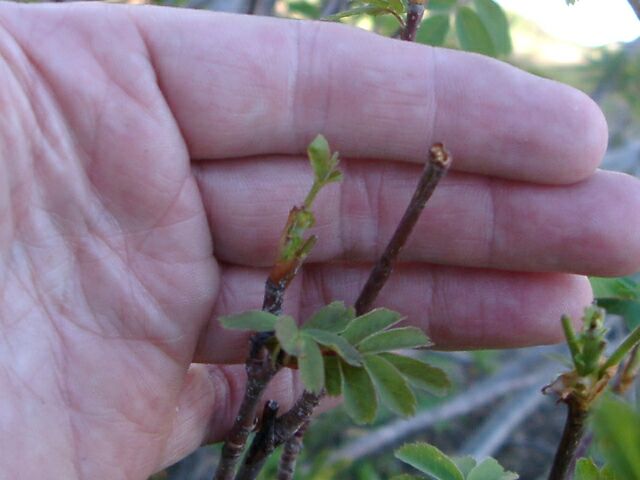
Mountain ash browse.
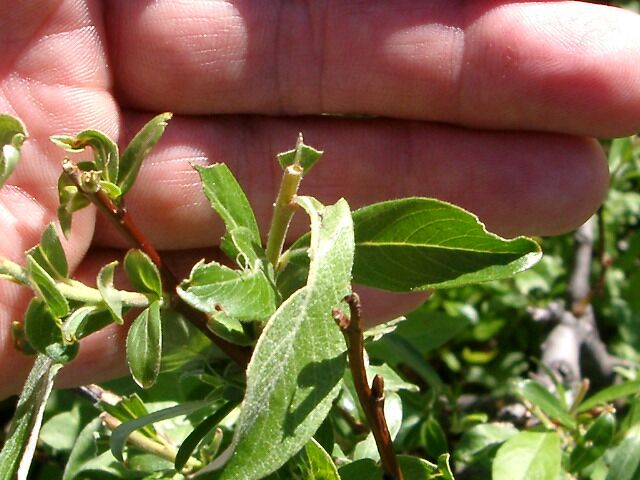
Willow browse.
Goats alternate between feeding and resting to chew their cud. At Goat Rocks I found that most of the flock fed until about 10 AM when they stretched out. After an hour or two they started to feed again. Two, however, lay down on a snowfield for much of the day, probably to escape the heat.
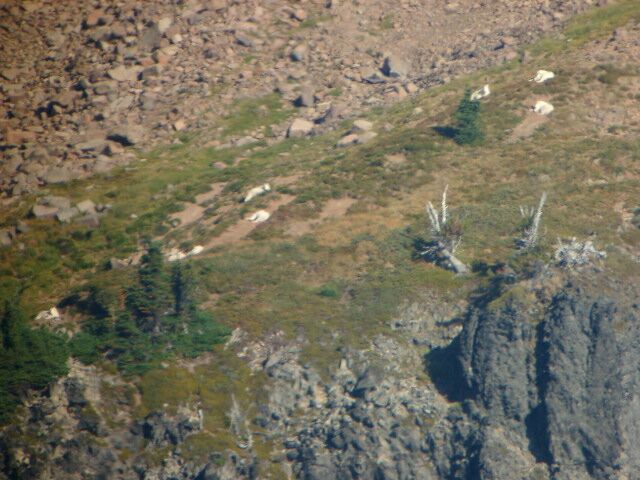
I also observed many nannies, each with a single kid, sometimes feeding alone and sometimes feeding and resting with others in large groups.
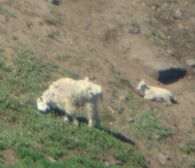
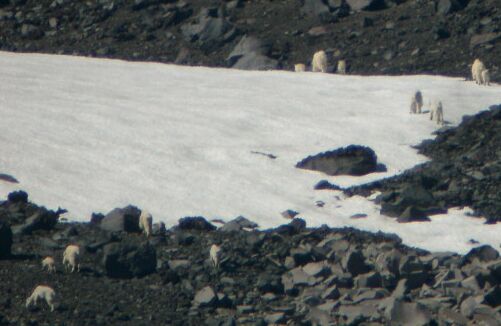
The scat appears similar to bighorn.

Dust pit. In the spring, goats lie and rub in dust pits. Late one summer I found the pit in following photo near a goat route. It appears to have been used earlier in the season.
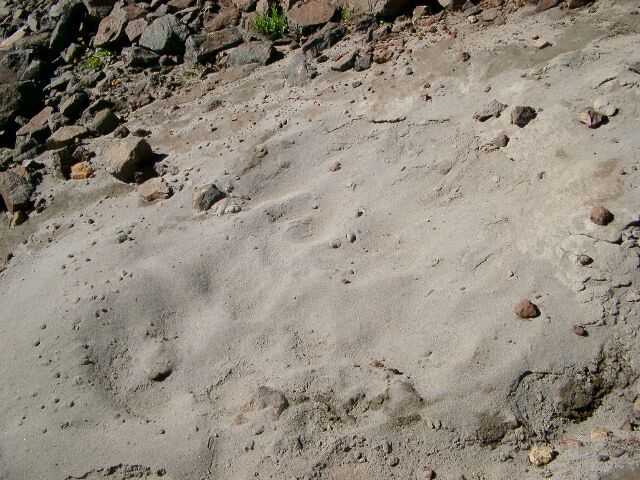 Return to Menu
Return to Menu